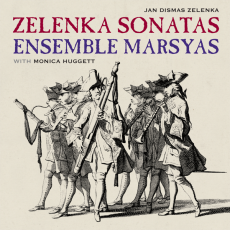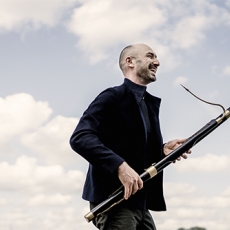Ensemble Marsyas - Zelenka Sonatas - International Record Review
In an age of artistic conformity, Jan Dismas Zelenka (1679-1745) had a refreshingly individual voice, and even when the conditions of his employment at the court of Dresden disappointed him, he set his own ambitious goals. One of his contemporaries characterized him as a ‘reserved bigoted Catholic, but also a respectable, quiet, unassuming man, deserving of the greatest respect'. He certainly earned the respect of near neighbour Johann Sebastian Bach, who ‘highly esteemed' Zelenka's serious contrapuntal procedures. Today's listeners, though, are more immediately charmed by Zelenka's quirky turns of phrase and flashes of original genius, of which there are plenty in the three sonatas recorded here.
The original purpose and date of Zelenka's six sonatas for two oboes and bassoon is uncertain. The best guess is that they were written in Prague around 1722 as demonstration pieces to show a potential patron that the young composer was capable of writing music for the coronation celebrations of Charles VI as King of Bohemia the following year. If this hypothesis is correct, then these sonatas succeeded in their aim, for Zelenka was commissioned to write a series of four works for chamber ensemble requiring instrumentalists of the highest calibre. The sonatas similarly call for players with an advanced technique, especially, and unusually, a bassoonist who understood what it was to leave the dull plod of the continuo line far behind and take a full part in the thematic and virtuoso life of the music.
This was possible because these six sonatas belonged to a rare species known as the quadro sonata - in which there were two bass lines: the harmonic foundation of the continuo and an independent melodic line for the bassoon. So, although often referred to as trio sonatas, Zelenka's sonatas are in fact in four parts.
The young Edinburgh-based Ensemble Marsyas, which is new to me, has an excellent pedigree: many of its members trained together in Basel and with the outstanding European Union Baroque Orchestra. Their affinity for Zelenka was recognized when they won the 2007 Brugge International ‘Musica Antiqua' Competition playing his music. At every twist and turn of Zelenka's vivid imagination there's a sense that they know this music intimately and, though complex, the textures remain wonderfully clear, the music governed by a strong sense of direction and structural awareness. Sonata No 5 in F comes off especially well as the players suggest in their playing that this may be Zelenka's homage to the Vivaldian concerto. They bring bags of bite and energy to the unison theme of the opening ritornello movement, while the fugal form of the final Allegro, with its fastidiously intricate passagework, is made to sound like Vivaldi reworked by Bach.
Sonata No 3 in B flat is the only sonata of the set where one of the oboes is replaced by a violin: the perfect opportunity for Monica Huggett to make a guest appearance - and her playing is as fluid and agile as one could wish. But it's the oboists who occasionally inject a whiff of wit into the music - as in the delicious bending of a cadential note at the end of the third movement. The contrasting timbres of the three active instruments, and the rhetorical awareness of the players, point up the gratifyingly independent roles Zelenka assigns them, especially in the densely argued fugal Allegro. This movement also involves some wonderfully chuggy ‘Alberti' bass figuration for bassoonist Peter Whelan, who always rises to Zelenka's challenges with an apparent smile on his face and Olympic lips - wit and technique in perfect balance. The continuo support throughout is unusually sensitive, with theorbo, harpsichord or organ generally keeping to the background since the foreground is already so harmonically rich. Continuo practice, as well as the editorial challenges of the surviving sources, are discussed as part of a most engaging and informative booklet note.
Zelenka's sophisticated exploitation of rich textures and exhilarating counterpoint allied to his keen sense of harmonic colour are what give his music its depth and - in wine parlance - its ‘length': that layered detail which means that the music lasts long and develops on the musical palette. Ensemble Marsyas recognises and savours this quality, making Zelenka sound a little more elegant and cosmopolitan than his occasionally neurotic, over-written music suggests.
My only niggle is with the length of the programme, which lasts a whisker under 50 minutes, even including the makeweight three minute ‘Andante' from the simphonie a 8. Ensemble Marsyas has what is described as an ‘on-going collaboration with Linn Records', and I hope that the short measure here is explained by a forthcoming companion volume of Zelenka's remaining three sonatas (though nothing is promised in the accompanying booklet). Sweet, but short.


